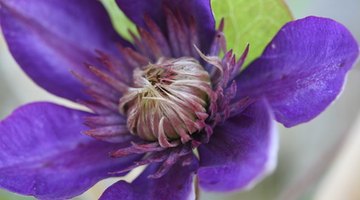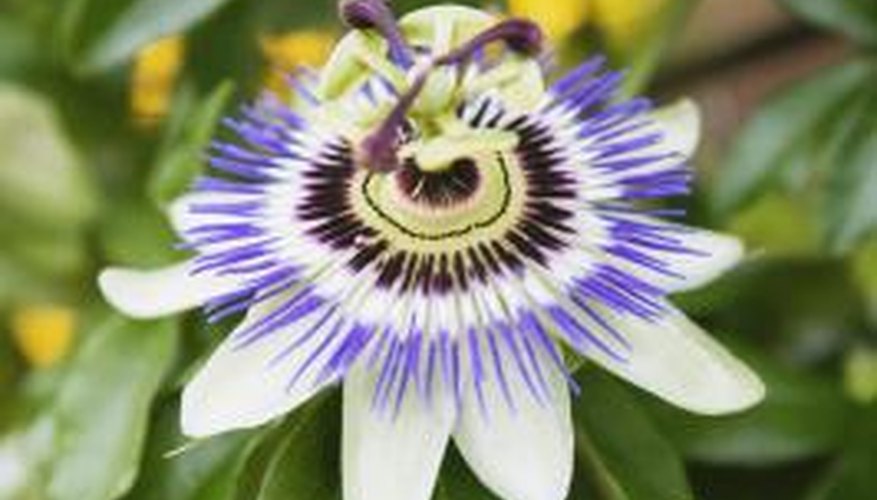Many species among the passion flower (Passiflora spp.) and clematis (Clematis spp.) genera are planted in home gardens. Without their distinctive flowers they appear similar, but passion flowers are not clematis.
Similarities
Passion flower vines and clematis vines share a common lineage from kingdom down to division and class--Plantae, Magnoliophyta and Magnoliopsida, respectively. Both generally sport ovate, dark-green waxy leaves with entire (uninterrupted or untoothed) leaf margins. They are both perennial vines with woody old growth at the base of the plant.
Passion Flowers

Passion flowers belong to the order Malpighiales and the family Passifloraceae. Their flowers burst open in spring (hence their common name of maypop) to reveal a complex sepal, corona, anther and stigma arrangement. They produce edible fruits and cling to supports via tendrils the grow from their stems. The flowers produce slightly rank odours that attract flies.
- Passion flowers belong to the order Malpighiales and the family Passifloraceae.
- They produce edible fruits and cling to supports via tendrils the grow from their stems.
Clematis

Clematis belong to the order Ranunculales and the family Ranunculaceae. Their flowers are simple and usually have a sweet, pleasant fragrance. They climb by twisting the vine stem itself around nearby plants or structures. Their leaves are arranged opposite each other along the stems, unlike passion flowers, whose leaves alternate along the stem.
- Clematis belong to the order Ranunculales and the family Ranunculaceae.
- Their leaves are arranged opposite each other along the stems, unlike passion flowers, whose leaves alternate along the stem.
